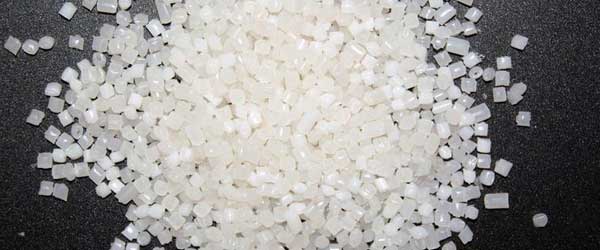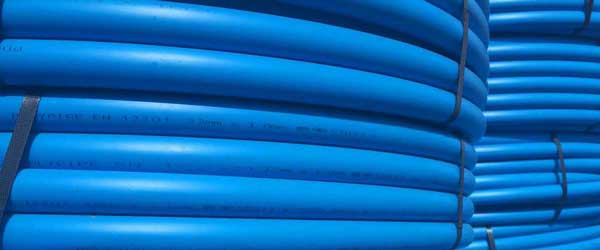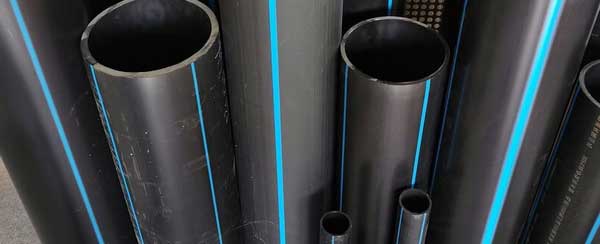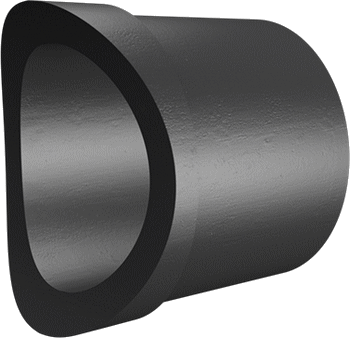Difference between HDPE and PE pipe
PE pipe can be divided into low-density polyethylene pipe (LDPE), medium-density polyethylene pipe (MDPE) and high-density polyethylene pipe (HDPE).
What is LDPE?
Low-density polyethylene is also known as high-pressure polyethylene (LDPE). It is the lightest type of polyethylene resin. It is milky white, tasteless, odorless, non-toxic and has no shiny waxy particles. It has good softness, stretchability, electrical insulation and transparency. It is also easy to process and has some air permeability. LDPE has good chemical stability, alkali resistance and general resistance to organic solvents.
The main features
- Cold resistant, low temperature resistant and high temperature resistant. The thicker film can withstand the sterilization process of 90°C hot water immersion.
- Good moisture resistance, stable chemical properties, insoluble in general solvents.
- The storage period of the contents should not be too long if it is used as food packaging which can oxidize easily.
- Oil resistance is poor, products can be slowly dissolved. When packing oily food, the food will take on an oily taste after long storage.
- Long-term exposure to UV and heat causes aging, affecting physical and dielectric properties.
- The melting point is 110 - 115°C and the processing temperature is 150 - 210°C. When it is in inert gas, the temperature can reach 300°C and it is still stable. However, it is easily degraded when the melt comes into contact with oxygen.
- The film is white, transparent and soft. Its strength is lower and impact resistance is higher than HDPE.

Application
The low-density polyethylene (high-pressure polyethylene) referred to in the petroleum industry is a plastic suitable for various molding processes of thermoplastic molding.
Its moldability is good, such as injection molding, extrusion molding, blow molding, rotary molding, coating, foaming, thermoforming, hot air welding, thermal welding, etc.
LDPE is mainly used as film products, such as..
- Agricultural film: flooring film, agricultural film, vegetable greenhouse film, etc.
- Packaging film: candy, vegetables, frozen food, etc.
- Blown film for liquid packaging: milk, soy sauce, juice, tofu, soy milk, etc.
- Heavy packaging bags: shrink packaging film, elastic film, liner film, etc.
- Construction films: general industrial packaging films and food bags, etc. Injection molded products: small containers, lids, daily use products, plastic flowers and injection molded blow molded containers.
- Medical equipment: pharmaceutical and food packaging materials, extruded tubes, sheets, wire and cable coating, profiled materials, thermoforming and other products.
- Hollow blown products: food packaging such as dairy products and jam, pharmaceuticals, cosmetics and chemical products Product containers, tanks, etc.
- LDPE is suitable for making films, heavy-duty packaging films, cable insulation materials, blow molding and foam products.
What is MDPE?
MDPE is medium-density polyethylene. It is synthesized by copolymerization of α-olefin and density control.
The main characteristics
- Medium-density polyethylene is a type of polyethylene, one of the most widely used plastics in the United Kingdom. Polyethylene itself is a thermoplastic polymer with a very wide range of applications.
- MDPE is a very versatile material, and its unique specific denisty allows it to strike a useful balance between the two. It has many of the same strength properties as HDPE, including high impact resistance to falls and other impacts, but retains the excellent flexibility of LDPE. The combination of these properties means it can be used for applications not suited to either of the other two materials, such as heavy-duty cables.
- MDPE has not only the insulation resistance of most plastic materials, but also high heat resistance and better resistance to stress cracking, or notch sensitivity.

Application
MDPE can be processed by extrusion, injection, blowing, rotation and powder forming. The parameters of the production process are similar to those of HDPE and LDPE. It is often used in pipes, films, hollow containers, etc. MDPE is used for high-speed molding of various bottles, high-speed automatic packaging films, various injection products, rotational molding products, wire and cable coatings, waterproof materials, water pipes, gas pipes, etc.
What is HDPE?
HDPE is an opaque white waxy material with a specific gravity lighter than water (0.941-0.960). It is soft and tough, but slightly harder than LDPE. It is also slightly elongated, non-toxic and tasteless.
Properties
- HDPE has good heat and cold resistance, good chemical stability, high rigidity and toughness, and good mechanical strength.
- Dielectric properties and resistance to environmental stress cracking are also good.
- Hardness, tensile strength and creep are better than those of LDPE.
- Wear resistance, electrical insulation, toughness and cold resistance are good, but slightly worse than low-density insulation.
- Good chemical stability, at room temperature, insoluble in organic solvents, resistant to acid, alkali and various salt corrosion.
- The membrane has low water vapor and air permeability and low water absorption.
- Resistance to aging is poor and resistance to environmental cracking is not as good as that of LDPE, especially thermal oxidation will reduce performance. Therefore, antioxidants and ultraviolet absorbers should be added to improve the resin.
- The hot deformation temperature of HDPE film under tension is lower, which needs attention in application.

Application
- HDPE resin can be processed into plastic products by injection, extrusion, blow molding and rotational molding.
- Injection molding products: Various types of containers, industrial accessories, medical supplies, toys, shells, corks and shields, etc.
- Extrusion Molding Products: pipes, stretch strips, strapping, monofilament, wire and cable casings, etc.
- Blow Molding Products: Various types of hollow packaging and ultra-thin films. In addition, it can also form decorative building panels, shutters, synthetic wood, synthetic paper, synthetic film and calcium plastic products.
- HDPE can form so many products, so its function and application is wide. It can be used in food industry, pharmaceutical industry, construction, agriculture, mining, etc.
References.. www.longainpipe.com
Color or Stripe Color of PE Pipes
| Color | Application | Common Use |
| Blue | Potable & Drinking Water | Typically used for potable water supply. Not to be used for recycled or reclaimed water |
| Black | General Purpose, Stormwater & Fabricated Fittings | Typically used in general purpose, stormwater |
| Yellow | Gas - Town, Fuel, Coal, Seam Gas | Used extensively as either a striping or co-ex color for identification of gas, fuel gas and coal seam gas |
| Purple | Recycled/Reclaimed Water | Pipe for recycled/reclaimed water applications Branded as "RECYCLED OR RECLAIMED WATER DO NOT DRINK" WSAA specify - Striped for mains, striped or full co-ex for service lines |
| Red | Fire Service Water | Dedicated fire-extinguishing supply mains |
| Light Grey | Gravity Sewer | Typically used in gravity sewer applications. |
| Cream | Sewer Rising Main | Dedicated for pressurised sewer applications and specified by WSAA Branding must contain word 'SEWAGE' |
| White | Communications and Above Ground Mining | Used to identify communication conduits and in mining to reduce heat load on above ground transfer lines |
| Orange | Electrical Conduit | Used to identify electrical conduits and services |
| Green | Rainwater/Raw Water | Used as a striping color for rural water pipe used as a co-ex and with 'RAINWATER' branding for rainwater harvesting |
| Blue (B41 Bluebell) | Compressed Air (co-ex) | Same color as the potable water, used as a full outer co-ex Branding will have de-rating applied as per PIPA POP002 |
| Dark Blue | Compressed air (solid blue) | The global PE100 blue color to be used when making solid wall blue pipes. The only ISO9080 approved blue compounds are this color |
Related Post(s)

HDPE pipe is a type of flexible plastic pipe made of thermoplastic HDPE (high-density polyethylene) created by the copolymerization of ethylene and small amounts of other hydrocarbons...

HDPE fittings such as elbows, tees, reducers and end caps are manufactured according to ASTM F2206 - Standard for Fabricated Fittings of Butt-Fused Polyethylene Plastic Pipe...